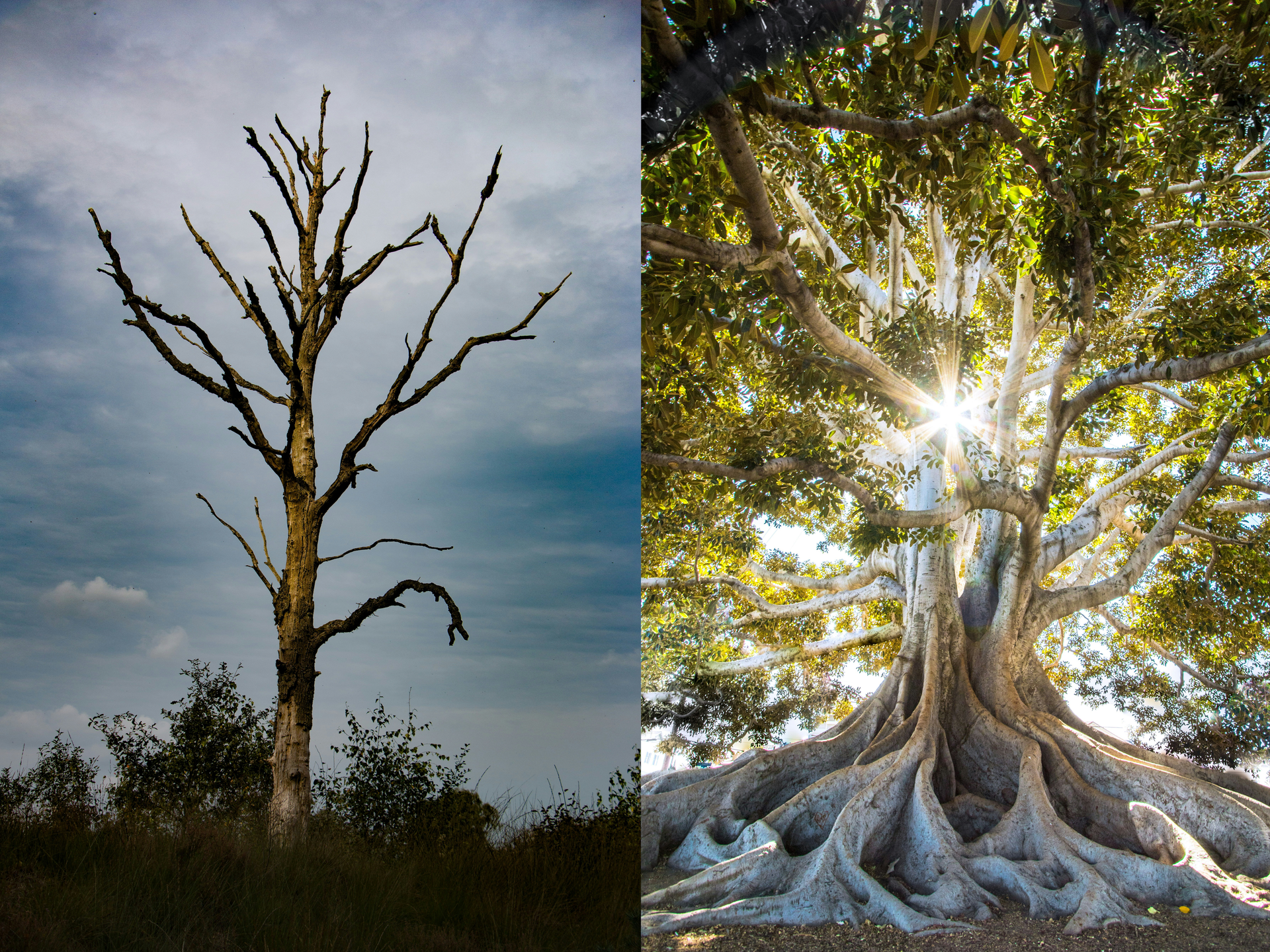Nature blogging: Capturing the essence of the wild, one post at a time.
8 Differences Between a Healthy and Unhealthy Tree
Rooting for Growth: Spotting the Differences and Treating Unhealthy Trees!
Hey there, nature enthusiasts! Today, we're diving deep into the world of trees – but not just any trees. We're talking about the subtle yet crucial differences between a thriving, vibrant tree and one that's seen better days. So, grab your gardening gloves and let's get down to earth!
1. Roots That Rock:
A healthy tree has roots that run deep, anchoring it firmly in the ground and providing a strong foundation for growth. On the flip side, an unhealthy tree may have shallow roots, leaving it vulnerable to toppling over in strong winds. Treat it by enriching the soil with compost and providing regular watering to encourage root growth. But how to create compost? Check out
this book for creating compost from trash.
2. Lush Leaves vs. Lackluster Foliage:
Take a look at the leaves – are they lush and green, or wilted and yellowing? Healthy trees boast vibrant foliage that sings with life, while unhealthy ones may show signs of stress or disease. Treat them with proper pruning to remove dead or diseased branches, allowing for new growth and improved circulation of nutrients. To prune the tree, you can use this
budget pruning tool set with a rating of 4.3/5 stars.
3. Flexibility in the Breeze:
A healthy tree sways gracefully in the breeze, bending but not breaking under pressure. Conversely, a brittle tree may snap at the slightest gust of wind. Help it bounce back by gently staking it for support and providing supplemental watering to strengthen its resilience.
4. Abundant Fruitfulness:
Healthy trees bear fruit in abundance, a testament to their vitality and well-being. If your tree is struggling to produce fruit, it may need a boost of nutrients. Consider fertilizing with organic compost or a balanced
fertilizer to promote flowering and fruit set.
5. Resilience to Pests and Diseases:
Healthy trees have natural defenses that protect them from pests and diseases, whereas weakened trees may succumb more easily to attacks. Treat them by practicing good garden hygiene, such as removing fallen leaves and debris, and using organic pest control methods to keep pests at bay.
6. Continuous Growth:
Healthy trees never stop growing, reaching ever higher towards the sky. If your tree seems stagnant or stunted, make sure it has enough room to grow!
7. Thriving in Changing Seasons:
Healthy trees adapt to the changing seasons with ease, while unhealthy ones may struggle to cope with extremes in temperature or moisture levels. Help them acclimate by mulching around the base to regulate soil temperature and moisture, and providing supplemental watering during dry spells or heatwaves.
8. Supportive Ecosystem:
Healthy trees thrive in diverse ecosystems, surrounded by a network of beneficial organisms that support their growth and well-being. If your tree is lacking in this department, consider enriching the soil with organic matter, planting companion plants to attract beneficial insects, and creating habitat features such as bird feeders and insect hotels to encourage biodiversity.
So there you have it, fellow tree-huggers – eight key differences between healthy and unhealthy trees, along with some handy tips for treating the latter. Remember, with a little love and care, even the most struggling tree can be nurtured back to health and vitality. So let's roll up our sleeves and get to work – our trees will thank us for it!
Other Blogs










